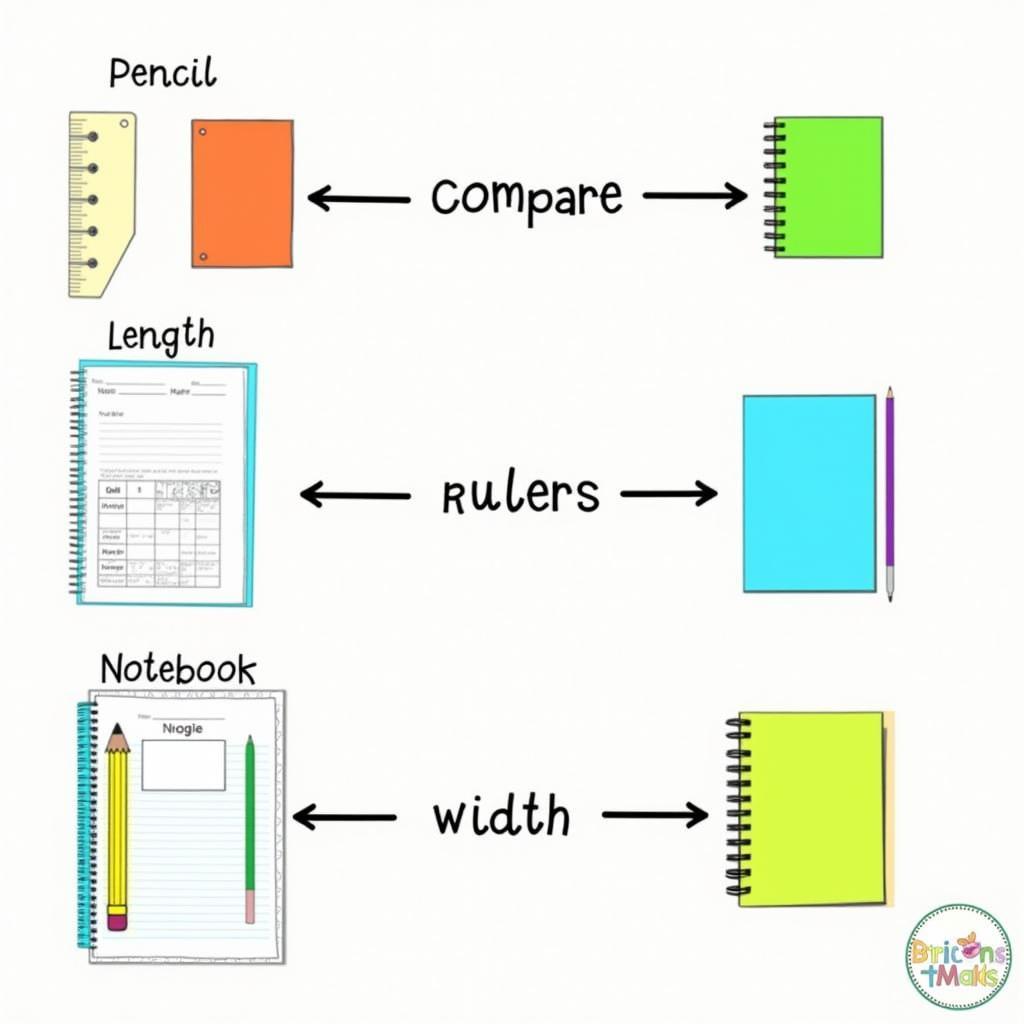Getting familiar with the skill of comparing length and width is a crucial step in developing spatial reasoning and observational skills. This skill is not only beneficial in academic learning, especially in mathematics and science, but also essential in everyday life. From arranging furniture and estimating distances to reading maps, the ability to compare length and width plays a vital role.
Exploring the World Around Us with Length and Width Comparison Skills
Comparing length and width is the ability to differentiate and assess size differences between objects. This skill helps us understand the space around us and interact with it effectively. Cultivating this skill from an early age will help children develop logical thinking, observational skills, and problem-solving abilities.
Comparing Length: From Longer to Shorter
Comparing length involves determining which object is longer, which is shorter, or whether two objects are of equal length. Start with familiar objects around the house, such as two pencils, two books, or two strings. Place the two objects side by side and ask the child, “Which pencil is longer?” or “Which book is shorter?”. Regular practice will help children grasp the concepts of longer, shorter, and equal.
Comparing Width: From Wider to Narrower
Similar to comparing length, comparing width involves determining which object is wider, which is narrower, or whether two objects are of equal width. You can use objects like two pieces of paper, two tables, or two roads to illustrate. Place the two objects side by side and ask the child, “Which piece of paper is wider?” or “Which road is narrower?”. Comparing width helps children better understand space and the dimensions of objects.
 Children comparing the length and width of school supplies like pencils and books
Children comparing the length and width of school supplies like pencils and books
Getting Familiar with Length and Width Comparison Skills Through Games
Learning through play is an effective method to help children absorb knowledge naturally and enthusiastically. Here are some games to help children become familiar with length and width comparison skills:
- Puzzles: Puzzles help children practice observation skills and compare the sizes of puzzle pieces.
- Drawing: Encourage children to draw objects with different lengths and widths.
- Measuring: Use a ruler to measure the length and width of objects around the house.
Applying Comparison Skills in Life
Length and width comparison skills are not limited to academic learning but are also widely applied in everyday life. For example, when arranging furniture at home, we need to compare the sizes of objects to choose suitable placement. When shopping, comparing the sizes of clothes and shoes helps us choose the right fit.
The First Step Towards Spatial Reasoning
Becoming familiar with length and width comparison skills is an important first step in developing a child’s spatial reasoning. This skill not only helps children excel in science subjects but also supports them in many other activities in life.
Professor Nguyen Van A, early childhood education expert, shares: “Cultivating length and width comparison skills from an early age will help children develop logical thinking, observational skills, and problem-solving abilities.”
Ms. Tran Thi B, elementary school teacher, says: “Children who are trained in this skill often have better math and science learning abilities.”
Conclusion
Getting familiar with length and width comparison skills is a crucial foundation for a child’s overall development. Let’s create a fun and engaging learning environment to help children develop this important skill.
FAQ
- When should I start teaching children length and width comparison skills?
- How can I make learning this skill engaging for children?
- What games can help children practice this skill?
- Is this skill important for children’s academic learning?
- How do I know if a child has mastered this skill?
- What are the applications of length and width comparison skills in life?
- Besides games, what other ways can help children practice this skill?
Describing common question scenarios.
Parents often wonder how to teach children to compare length and width, especially when children have difficulty distinguishing these concepts. Some parents also want to learn more about activities and games to help children practice this skill effectively.
Suggestions for other questions, other articles on the website.
You can learn more about other soft skills for children on our website, such as communication skills, teamwork skills, and creative thinking skills.